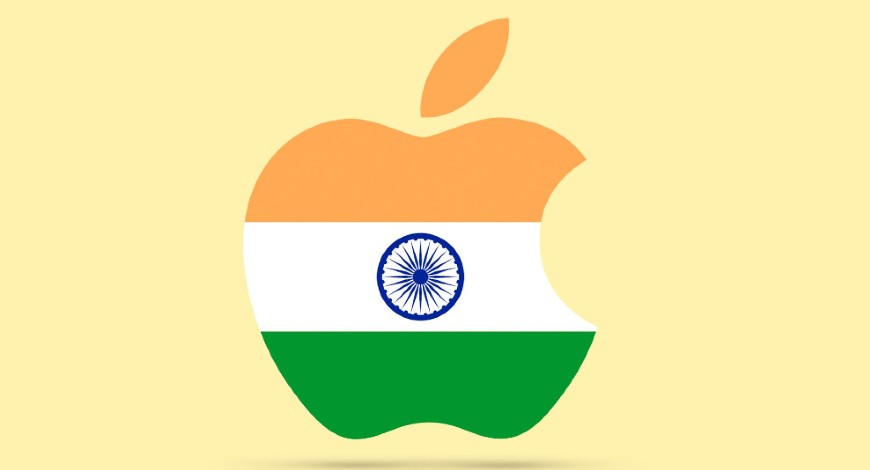Company News
Foxconn crisis shows one of many challenges Apple faces in India

Can India build mini-cities to support a large workforce dominated by young women who work in massive factories that are being built to churn out mobile devices and electronic products for global markets? That’s a reality Apple Inc and its vendors are confronting in their bid to meet commitments under the government’s ambitious production-linked incentive (PLI) scheme for mobile devices.
The challenges were highlighted starkly last week when one of Apple’s major vendors, Foxconn Hon Hai, was put “on probation” by the US major after a protest by women workers living in dormitories at the Taiwanese company’s plant near Chennai, forcing a temporary closure. They were protesting after several of them suffered severe food poisoning.
The Cupertino-headquartered company has appointed independent auditors to investigate the grievances before Foxconn can resume operations. Meanwhile, the government has sent out signals on the kind of housing and other infrastructure support that would be needed to ensure that such issues do not recur.
But, it’s a two-way street. Apple and its vendors have taken a big bet on India. The three vendors — Foxconn, Wistron and Pegatron — have committed to one of the fastest workforce scale-up programmes, from scratch to 120,000 (300,000 will be indirect) in four years. Of this, 100,000 workers are to be hired in the next three years.
Apple hires three times more workers per phone than the competition, because a lot of work, including quality checks, is done manually. For comparison, consider Samsung, which has the world’s largest factory in Noida manufacturing mostly mobile devices. It currently employs 10,000 to 11,000 workers.
An idea of the challenges embedded in this rapid scale-up can be had from the fact that a leading employer in manufacturing — Tata Steel — has a workforce of roughly 130,000 across the country. And that’s been built over decades.
This apart, Apple vendors have committed to ensuring that women account for 60 to 70 per cent of the workforce (at Foxconn’s Sriperumbudur factory, it is already 80 per cent). Establishing this level of gender diversity on the shop floor has never been attempted on such a massive scale.
For the government, the success of the ambitious target of touching electronics production worth $300 billion by 2025 from $70 billion currently, will crucially depend on whether Apple Inc and its vendors can deliver. It is being seen as the model that could influence global companies to invest in 14 other PLI schemes the government has announced so far. Apple, however, did not respond to queries.
Apple vendors account for 60 per cent of the 200,000 new jobs that the government is targeting from the mobile-device PLI scheme. This apart, the government expects Apple to do much more — hit sales of $50 billion in 2025 by producing other products such as laptop, iPads and wearables, apart from its PLI target for that year.
To do that, analysts estimate that Apple vendors will require to add another 200,000 jobs — which means larger factories, more land and housing and infrastructure to support over 1.3 million people with direct and indirect jobs.
Right now, Apple vendors in India are massively scaling up their workforces at breakneck speed. To meet PLI commitments, Foxconn Hon Hai will increase the number of workers in its Chennai plant from 17,000 currently to 26,000 in 2022-23 and hit 35,000 the next year. Wistron has an even more ambitious plan for its plant near Bengaluru — to increase its workforce threefold in 2022-23 to 35,000 and 39,000 the next year. The third vendor, Pegatron, is yet to start production.
Compare these overall commitments to, say, the massive PLI scheme for automobiles and auto components. The government expects all players to generate 750,000 jobs collectively. And tech-based EV player Ola Electric, which is aiming an all-women’s workforce to produce scooters in its mega factory near Bengaluru, has a far smaller number of workers to handle —10,000 for its full annual capacity of 10 million scooters, which might take a few years.
For Apple Inc, the PLI scheme partly bridges the cost-of-production disability between India and China/Vietnam by offering incentives of four to six per cent for five years on the production value. Some of those incentives may be neutralised, however, by the high tariffs on imports of components that are not produced in India (and that accounts for the bulk of the cost) like displays.
But the third most important criterion for Apple’s strategy to shift more capacity from China is its ability to build scale to reduce costs — bigger factories with more workers, more production, with government supporting infrastructure such as housing and building mini-cities just like the Chinese government has done.
Yet, even after Apple vendors complete their workforce numbers committed under the PLI scheme, they would still be only a tenth the size of an average Chinese Apple Inc plant, which ranges from 250,000 to 500,000. Even the size of the plants with facilities for housing around it are nearly eight times larger than those in India.
More important, say analysts, is the huge subsidy that the Chinese government doles out to Apple vendors ($1.5 billion to Foxconn, for example) to cover housing, part of energy and transportation costs and even bonuses to employees if they meet export targets.
The question, then, is whether the government — both the states and the Centre — is ready to replicate these elements of the Chinese model to convert India into a global manufacturing hub. Business Standard














You must be logged in to post a comment Login